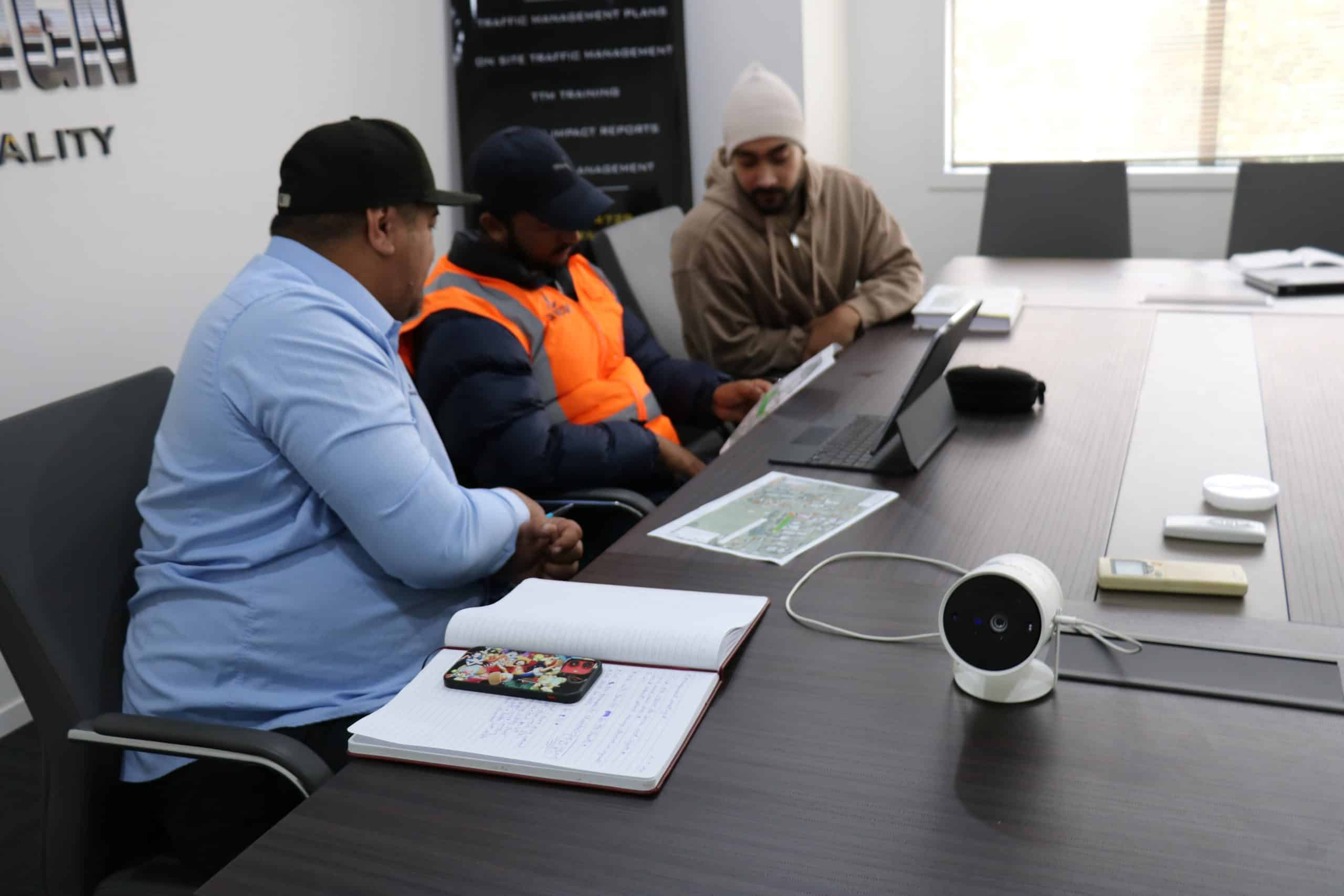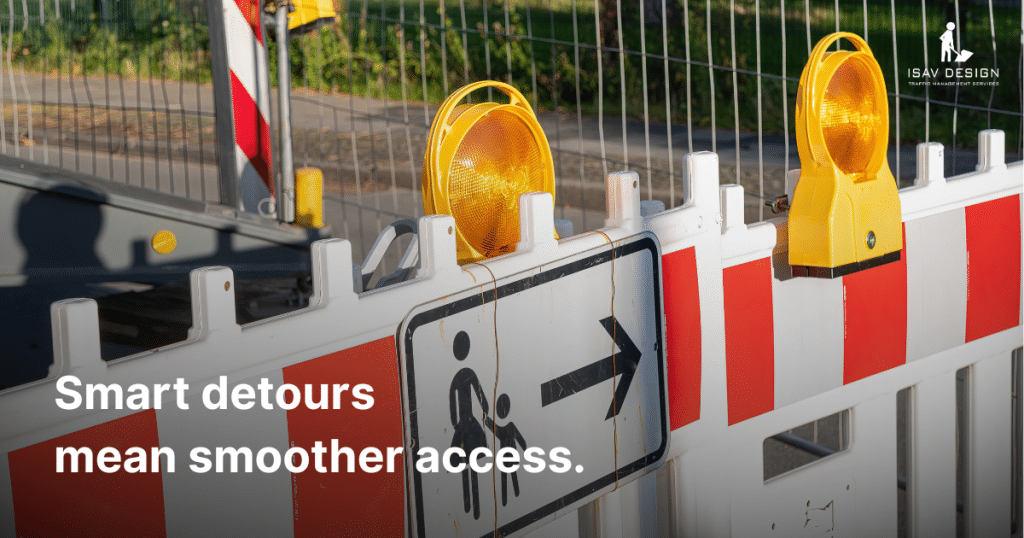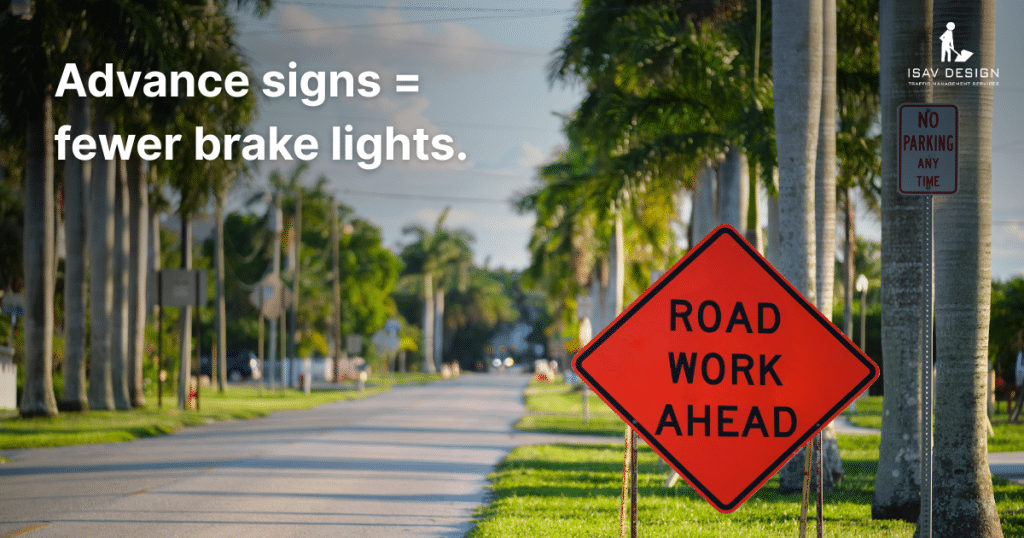
A good Traffic Management Plan does not make headlines. That is because its biggest wins often go unnoticed. When a plan works as it should, there is no drama, no public complaints, and no delays. The right TMP clears the way — both literally and logistically — without ever drawing attention to itself. It does not just tick a compliance box. It removes friction, prevents near misses, and keeps everyone moving safely.
The value of a TMP lies in these small but meaningful wins. It keeps things from going wrong. From a driver avoiding a blocked lane to a footpath detour that keeps people safe, these quiet moments are what define a well-executed traffic solution. Here are thirteen ways the right TMP has helped projects stay on track and under control — without anyone needing to shout about it.
When a detour route is planned properly, delivery vehicles know exactly where to go. In this case, a commercial van had to reach a site near a main road, mid-morning, during steady traffic. Instead of pulling up across a footpath or reversing through pedestrian flow, the driver followed clear signage that directed them to a designated drop-off bay.
The delivery happened quickly, the site remained safe, and through-traffic was not held up. This did not make the news — but it made the day easier for everyone involved.
A small infrastructure project was underway near a primary school, just before the afternoon bell. Instead of leaving a makeshift layout or shifting cones during active hours, the TMP included cyclist-specific signage and temporary barriers that ran alongside the closed lane.
Children on bikes rode through calmly, with space between them and passing vehicles. Parents noticed. Teachers appreciated it. No one had to give directions on the spot, and the ride home remained uneventful — exactly as it should be.
Diversions can cause hesitation, especially in multi-lane areas. In one instance, a left-turn lane was closed with no prior warning, and drivers were merging abruptly into live traffic. After a TMP update, clear signs were placed 100 metres earlier, giving drivers time to prepare and adjust without pressure.
A motorist who might have taken a sharp, last-minute turn instead followed the signage smoothly. It avoided a near-miss situation and kept the lane change stress-free. That one adjustment made every vehicle behind them safer, without the need for direct intervention.
A planned works zone affected one lane of a busy arterial road. The TMP included a dedicated emergency access lane, marked and kept clear throughout the day. When an ambulance approached during an unrelated medical call, it moved through without slowing down or needing clearance.
This kind of planning is not guesswork; it is based on working with emergency services in advance and understanding local access needs. It is easy to overlook in the plan stage, but critical in real time.

Works along a main street required a temporary closure of a pedestrian path. Without a safe detour, pedestrians would be forced onto the road or onto uneven ground. In this case, the TMP included a temporary footpath using fencing and ramps, with wide enough clearance for prams and wheelchairs.
One afternoon, a mother with a child in a pram used the path without disruption. She did not need help, and she did not stop to check directions. The detour did its job quietly — which is what good pedestrian planning looks like.
Live works near passing foot traffic often force operators to pause for safety. In this case, pedestrian flow was separated from plant movement by barriers and clear offset zones. The digger operator continued without needing a spotter or frequent halts.
This was not about rushing the job. It was about keeping the operation predictable. The operator stayed focused, pedestrians stayed safe, and productivity stayed on schedule. No one was forced to choose between output and safety.
The project was close to a row of shops and a pedestrian crossing used heavily between noon and 2 pm. Rather than removing the crossing and directing pedestrians several blocks around, the TMP preserved a direct route using detour fencing and a widened footpath area on the opposite side.
It meant retail workers, delivery drivers, and students could cross safely during peak foot traffic. The result? Fewer complaints, smoother pedestrian flow, and no interruptions to local business access.

One of the simplest ways to lose public trust during road works is by failing to warn drivers about what lies ahead. In one example, advance signs were placed too close to a lane closure, forcing drivers to brake and turn awkwardly after already committing to the wrong lane.
After review, the TMP was updated to include clearer messaging two streets earlier. A driver who might have turned onto a blocked street received enough notice to follow a detour instead. Traffic kept flowing, and tempers stayed cool.

A traffic controller was managing alternating flow near a blind bend. The original cone layout had short spacing, which reduced the sight line for approaching vehicles. The TMP had included guidance for minimum spacing, but it was later refined based on visibility tests.
That adjustment gave the controller a better buffer zone. One morning, a fast-approaching driver had time to slow down and follow instructions safely. What could have been a dangerous situation passed without incident — thanks to layout details that paid off at the right moment.
Construction near a commercial site meant the footpath and parking bays were unavailable. Couriers still needed access without disrupting cycle lanes or general traffic. The TMP accounted for this by creating a delivery-only pull-in bay just ahead of the active works zone.
One courier used it that morning to make a five-minute delivery. No one honked. Cyclists passed through without weaving. The street stayed active, but orderly. Planning for those small interactions kept the entire site from becoming congested.
An early-morning jogger approached a construction site on their usual route. Instead of facing fencing and guesswork, they followed clear directional arrows that guided them through a safe detour around the works zone.
There was no need to slow down or double back. The jogger stayed on pace, and the site perimeter remained respected. It was a simple layout change — smart placement of temporary fencing and signage — but it preserved user experience without compromising safety.
Compliance with Road Controlling Authority (RCA) guidelines is not optional. In one case, a contractor planned minor works but failed to include all mandatory signage in the initial TMP draft.
After review and revision, the correct signs were added in time for the job to begin.
Because of that adjustment, the contractor passed the site inspection on day one. No delay. No warning notice. Just a smoother start and confidence in delivery. Getting the TMP right up front made all the difference.
There was nothing flashy about this site. It was a small team replacing kerbing on a residential street. The TMP kept vehicles off the shoulder, protected pedestrians with fencing, and ensured emergency access was always open—no near misses. No delays. No unexpected call-outs.
By 4:30 pm, the crew had packed up with the day’s work complete — and no issues reported. That is the ideal outcome. A plan that supports the work, not one that calls attention to itself. Success by way of stability.
When a Traffic Management Plan is done well, it blends into the background. That is not a weakness; it is the point. Its success is measured not in headlines or high-fives, but in what does not happen: no close calls, no confused pedestrians, no missed deliveries, no shutdowns.
Each example in this list shows how small, thoughtful decisions within a TMP can prevent big problems. Whether it is protecting a jogger’s stride or keeping an ambulance moving, these quiet moments reflect strong planning and skilled delivery.
For contractors, site managers, and project leads, it is worth remembering that a TMP is not just a requirement; it is a real tool. When built with care, it reduces risk, supports the crew, and earns public trust, all while helping the work move forward without conflict.
That is how a well-designed plan saves the day — even if no one notices.